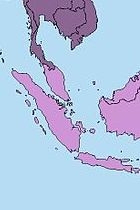Piracy Update: Malacca & Singapore Straits (SOMS) & South China Sea

The overall maritime threat in the region is assessed as LOW, meaning there is a possibility of an incident. During 2015, the number of confirmed and suspicious incidents (eg. boardings, robberies, hijackings, etc.) increased significantly compared to 2014.
However, Q1/Q2 of 2016 saw an improvement in the piracy and robbery situation in these areas. In particular, the number of incidents involving hijacking decreased significantly compared with the same time last year.
In addition, it has been noted that the incidents reported in 2016 have been less severe in comparison, with a decrease in the number of criminals involved per attack, with fewer beng armed, using threatening behaviour, taking hostages and using physical violence.
To fully comprehend the threat, it is important to understand the criminals involved and their Modus Operandi. It is clear, from studying the type of attacks that have occurred over the past decade, that they fall into 3 distinct areas:
1. Opportunistic (non-confrontational)
These are the criminals who do not target specific vessels or have a product that they particularly want to steal. They operate in darkness, when the vessel is at anchor or stationary and tend to target those that are not vigilant and easily accessible. They will avoid confrontation and generally make a quick getaway when detected.
2. Opportunistic (confrontational)
Although they randomly select vessels with no particular theft in mind, they will exhibit a much more robust approach to the theft of cargo. In essence, they will be confrontational in nature, using threatening behaviour and taking hostages so they can plunder at will. On some occasions they are armed, although there is no intention to cause harm.
3. Organised
These criminals will target a specific type of vessel or cargo and operate in well organised and larger groups. This type of group is usually recruited and trained by organised syndicates who mastermind the robberies from shore side. Their intention is to maximise their exploits, so they usually target high net worth vessels or individuals.
To summarise the above, the modus operandi is consistent with the preferred ‘get in quickly – get out quickly’ way of doing business, and most incidents tend not to be violent in nature.

Singapore Strait
The threat is assessed as LOW.
The typical modus operandi in the Strait of Singapore is to execute swift, small scale raids on easily boarded vessels (eg. with low freeboard, stopped, or moving at a slow speed) and then quickly departing the vessel – ideally without being noticed by the crew.
There have been nine incidents since 1 January 2016 in/near the Singapore Strait (excluding incidents to the east of the Strait in the South China Sea), seven of which involved anchored/stationary vessels. Of the two remaining incidents, both involved easily boarded vessels (a tug and an accommodation barge). Given this, the use of mitigation measures is recommended. These measures may include:
-
Vessel hardening (deployment of physical barriers to prevent unauthorized boarding);
-
Securing of critical doors and hatches, particularly those providing access to the bridge, accommodations, or machinery control spaces;
-
Augmented visual/radar lookouts;
-
Crew counter-piracy training.

Malacca Strait
The threat is assessed as LOW.
Historically, most incidents in the Malacca Strait are robberies of vessels at anchor or in berthing. While there have been attacks on vessels while underway, there are no reports of any yachts having been targeted by pirates.
Mitigation measures as noted for Singapore will help ensure the threat level remains LOW.
South China Sea
The piracy/maritime crime threat is assessed as LOW.
Although there have been a number of piracy hotspots identified over the last four years in the South China Sea (such as near Ho Chi Minh City, Vietnam, near Pekan, Malaysia and in the waters around the Singapore Strait), the yachting fraternity has not been affected. Most often, pirates in this region (or to be more accurate, robbers) board the targeted vessel, steal easily-carried items, and leave without drawing the attention of the crew. Tankers in this area have also been hijacked and their cargo siphoned.
Risk Mitigation
The International Maritime Bureau advises mariners transiting the region remain vigilant and be meticulous about maintaining anti-piracy watches and measures. Early detection of possible intruders and raising the alarm has been successful in deterring piracy boardings in this region.
Other measures can be reviewed in the Regional Guide to Counter Piracy and Armed Robbery Against Ships in Asia, produced by the ReCAAP ISC.
Regardless of the level of threat, Securewest recommends careful review of best counter-piracy practices and procedure and implementing measures appropriate to the situation. Although there has been an improvement in the situation of piracy and armed robbery/theft against vessels, captains and crew are to exercise caution while transiting the areas of concern, in particular whilst at anchor.
For further information or to find out more about Securewest’s services please contact:
Wayne Britton: waynebritton@securewest.com
Website: www.securewest.com


Post your comment
You cannot post comments until you have logged in.
Login to post a commentComments
No one has commented on this page yet.
RSS feed for comments on this page | RSS feed for all comments